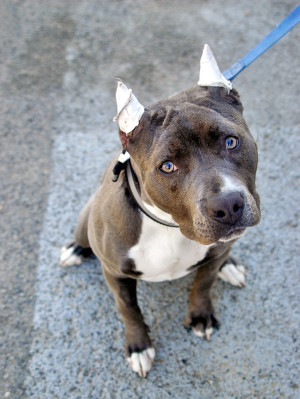Are Cane Corsos Banned in the UK? Here’s What You Need to Know
Cane Corsos are legal in the UK – but could that change? Here’s what pet parents need to know

Share Article
In this article:
Are Cane Corsos legal?opens in a new tab What does ‘banned breed’ mean?opens in a new tab Why are some dog breeds banned?opens in a new tab UK legislationopens in a new tab Banned dog breedsopens in a new tab Banned breed conditionsopens in a new tab FAQsopens in a new tab
Following the ban on XL Bullies coming into place in 2024, concerns are growing over whether other large and powerful breeds – such as the Cane Corso – could face similar restrictions. With their substantial stature and history as guard dogs, Cane Corsos are often caught up in debates around breed-specific legislation.
But are they actually banned in the UK? Unlike Pit Bull Terriers, Japanese Tosas, Dogo Argentinos, Fila Brasileiros and XL Bullies, Cane Corsos are not currently prohibited under the Dangerous Dogs Act. However, having one still comes with responsibilities.

Get (totally free) deals for food, treats, accessories, tech and way more pet parenting must-haves.
opens in a new tabHere’s what you need to know about the legal status of Cane Corsos in the UK, why some breeds are banned, and how legislation affects dog owners today.
Are Cane Corsos legal in the UK?
It’s legal to have a Cane Corso in the UK as well as to breed, sell and rehome them. However, the breed isn’t recognised by the Kennel Club. That just means they don’t meet certain criteria such as having a number of established generationsopens in a new tab that can have their temperament and other factors tracked.
What does ‘banned breed’ actually mean?
Under the UK’s Dangerous Dogs Act (DDA), several types of dogs are banned. But the term ‘banned breed’ can be confusing as it doesn’t actually relate to breed.
Instead, it refers to a type of dog that meets several physical characteristics. So a dog may not be a specific breed according to their DNA, but could meet enough criteria to fall under a banned breed ‘type’.
If a dog is a banned type, it means they are illegal to own, breed, sell, give away or abandon. In some cases, a dog that fits the banned type criteria can be given an exemption by a court. If they aren’t, they can be seized and put to sleep.
Why certain dog breeds are banned in the UK
The DDA came into effect in 1991 after a series of increased reported dog attacks throughout the nation. The government started by banning four breeds that had historically been used for fighting, arguing that they were a higher bite riskopens in a new tab than other dog breeds.
While breed-specific legislation (BSL) was introduced with the aim of increasing public safety, the law has been heavily criticisedopens in a new tab for failing to do so. Major animal charities stateopens in a new tab that BSL demonises dogs for the way they look, leading to dogs with no behavioural issues being unnecessarily put to sleep.
Charities and campaigners also note that aggressive behaviour can be caused by several contributing factors, including a dog’s upbringing and early experiences, with breed being less important – something that the law doesn’t take into account.
Current UK legislation on dog breeds
The UK bansopens in a new tab owning, selling, abandoning, giving away or breeding from the following types of dog, which are listed under the Dangerous Dogs Act 1991:
Pit Bull Terrier
Japanese Tosa
Dogo Argentino
Fila Brasileiro
XL Bully
A dog that is suspected of being a banned type can be seized and kept in kennels while the dog is assessed and you await a court hearing for the result. During this time, you’re not able to see them.
If you’re found guilty of owning a banned dog (without a Certificate of Exemption), you can receive an unlimited fine, be given up to six months in prison or be sentenced to both.
Your dog can also be euthanised unless the court believes they’re not a danger to the public and grants a Certificate of Exemption. If an exemption is given, you will have to follow strict rules such as keeping your dog on lead and muzzled in public.
A separate part of the same act applies to all dogs, regardless of type or breed. It statesopens in a new tab that it is a criminal offence for a dog to be “dangerously out of control” in public or in private, including in your own home.
That means you can be convicted if your dog injures someone or someone’s pet or if someone simply worried that your dog could injure them. The potential consequence is the same as being found guilty of having a banned breed: an unlimited fine, six months in prison, or both. Your dog may also be euthanised.
However, there are greater potential prison sentences if your dog injures someone or an assistance dog: up to five or three years respectively. If someone dies as a result of an injury inflicted by your dog, the sentence can rise to up to 14 years.
Dog breeds that are banned in the UK
Currently, five breeds are bannedopens in a new tab across the UK: the Pit Bull Terrier, Dogo Argentino, Japanese Tosa, Fila Brasileiro and XL Bully.
The first four have been banned since 1991. The XL Bully ‘type’ is the most recent addition to the list.
But remember that the law looks at physical characteristics rather than evidence such as DNA tests – any dog that resembles the appearance of one of those breeds could be deemed a banned type.
What are the conditions of owning a banned dog breed in the UK?
If your dog has been granted an exemption certificate, they will not be euthanised but will have to follow strict rulesopens in a new tab for the rest of their lives.
Banned dog breeds who are exempt will need to be neutered and microchipped and kept in a secure place that they can't escape from. They also need to be kept on lead and muzzled whenever they're in public, which includes in the car.
Other conditions for pet parents of banned breeds include:
Taking out third-party public liability insurance.
Being at least 16 years old to own or walk them.
Ensuring that the dog doesn’t spend more than 30 days a year away from them.
Being able to show the Certificate of Exemption when asked by a police officer or dog warden within five days.
Letting the Index of Exempt Dogs know if their address changes or the dog passes away.
It’s worth noting that you can no longer apply for exemption for any banned breed. There was a window for XL Bullies when the ban first came into effect but that window has now closed. The only way to now get an exemption is for a court to grant it.
Bottom line: Cane Corsos are not banned in the UK
It’s perfectly legal to own a Cane Corso in the UK right now. The government hasn’t given any statement regarding the breed or given an indicator that they could be added to the banned list in the future.
Frequently asked questions: are Cane Corsos banned in the UK?
How dangerous are Cane Corso dogs?
Cane Corsos are big dogs. They’re an Italian Mastiff that can weigh up to 50kg and have a powerful bite. They also have a history of being used as guard dogs which can lead people to think that they’ve naturally aggressive. (Unfortunately, people often illegally crop their earsopens in a new tab and dock their tails to make them look ‘scary’.)
But while they are perhaps more likely to guard things than some other breeds and their strength can be difficult for some people to handle, they aren’t inherently dangerousopens in a new tab. In fact, no dog is! Everything from genetics and health to early socialisation and training methods can affect the way a dog behaves. However, Cane Corsos can be expensive to insureopens in a new tab, according to recent research.
What four dogs are not allowed in the UK?
With XL Bully ‘type’ added to the list in 2024, there are actually now five banned types of dog:
Pit Bull Terrier
Fila Brasileiro
Dogo Argentino
Japanese Tosa
XL Bully
How do I register my Cane Corso in the UK?
There’s no need to register a Cane Corso if you have one and no way to officially register them. The Kennel Club doesn’t recognise the breed so won’t accept registration. However, all dogs should be microchipped and registered on a DEFRA-compliant database by the time they are eight weeks old.
There are also breed-specific registers, such as the International Cane Corso Federation (ICCF) Registryopens in a new tab, that you can apply for if you’d like to.
Resources
“ Breed-Specific Legislation: A 30-Year Mistake.opens in a new tab” battersea.org.uk, 27 Sept. 2021.
Chalk, Will. “ The Dog Breeds That Are Banned in the UK and Why.opens in a new tab” BBC News, 24 May 2016.
GOV.UK. “ Controlling Your Dog in Public.opens in a new tab” gov.uk, 23 Jan. 2012.
“ Dangerous Dogs Act 1991.opens in a new tab” Legislation.gov.uk, 1991.
Grierson, Jamie. “ Icelandic Sheepdog, Breed Mentioned by Shakespeare, Is a Pedigree at Last.opens in a new tab” The Guardian, 31 Dec. 2024.
RSPCA. “ Banned Dog Types | Breed Specific Legislation | RSPCA.opens in a new tab” rspca.org.uk, 2023.

Lauren Sharkey
Lauren Sharkey is a journalist-turned-dog behaviourist who runs Winnie’s Worldopens in a new tab: a training and behavioural company that aims to give dogs and their pet parents the life they deserve. She shares her life with a Shar Pei named Winston, who is the inspiration for her career change along with being her biggest love (and challenge!).
Related articles
- opens in a new tab
Is the Cane Corso the New Status Dog? Here’s Why That’s a Problem
The rise of Cane Corsos as status dogs highlights deeper issues in the dog world
![picture of pit bull with cropped ears and bandages]() opens in a new tab
opens in a new tab“It’s Absolutely Barbaric”: The Rise Of Ear Cropping In The UK
There's no good reason to ever do this to your dog
![a picture of a Fila Brasileiro]() opens in a new tab
opens in a new tabA Complete Guide to Banned Dog Breeds in the UK
It’s not just the XL Bully that the government has banned


